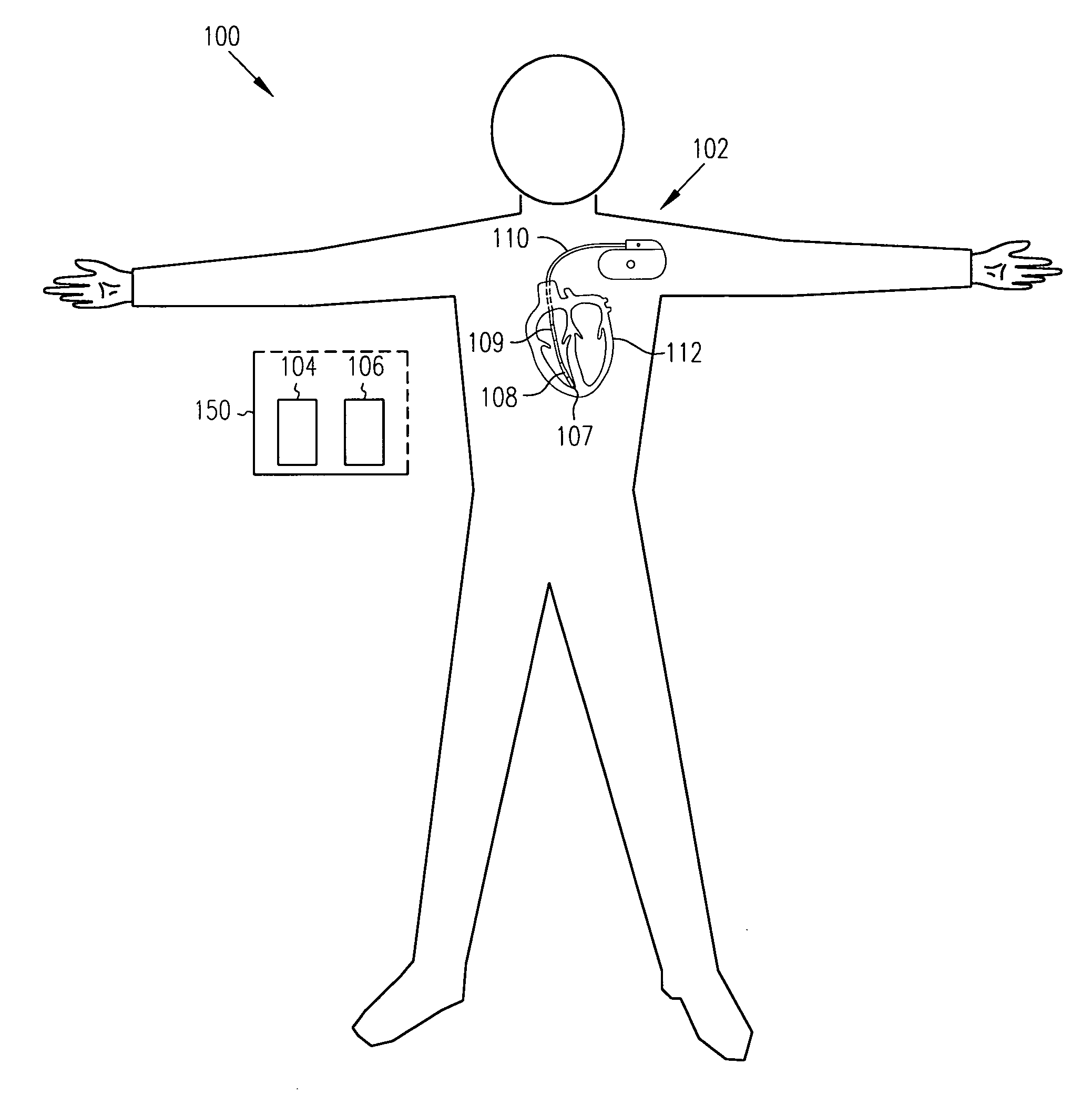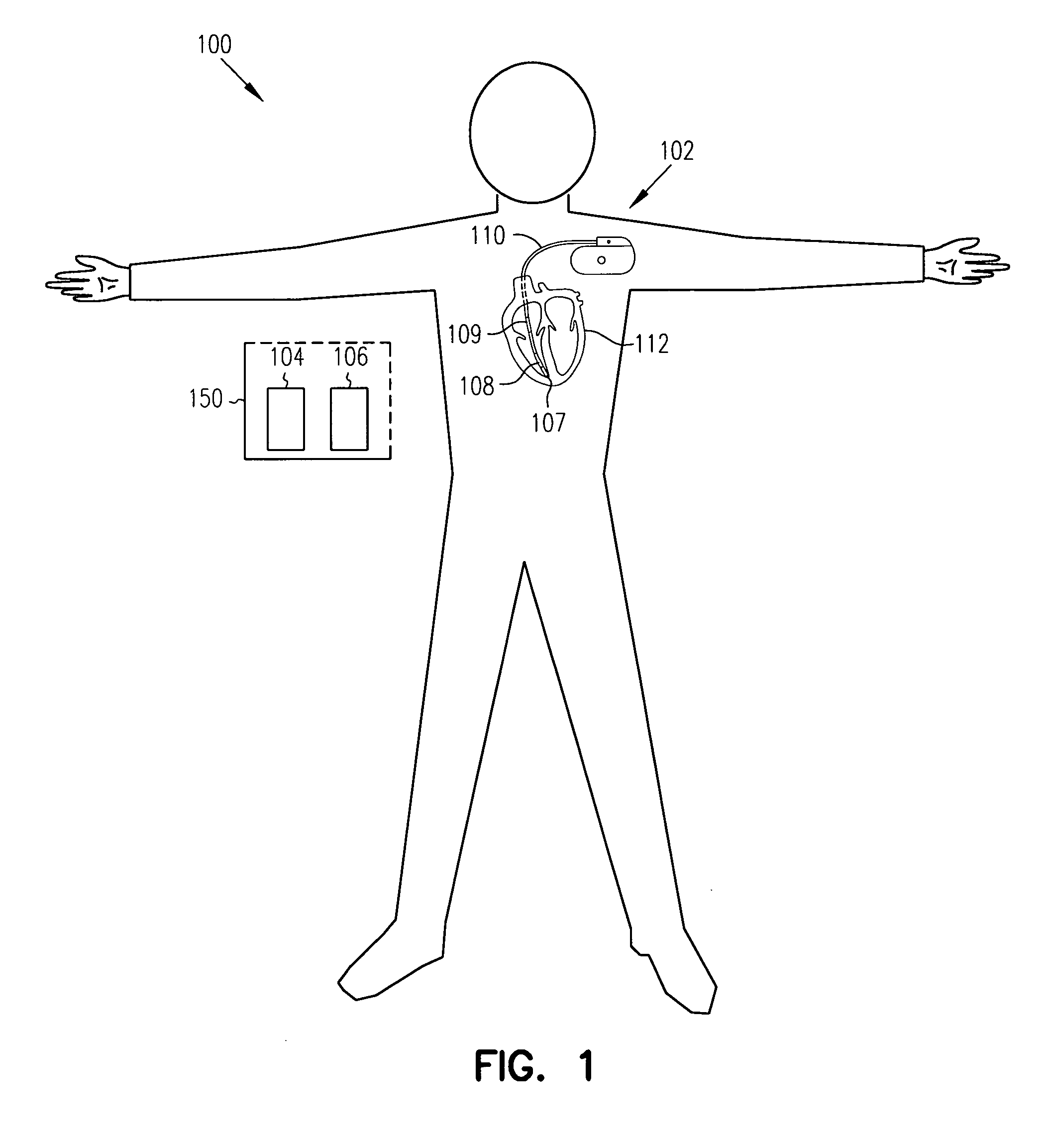Sensitivity and specificity of pulmonary edema detection when using transthoracic impedance
a transthoracic impedance and pulmonary edema technology, applied in the field of medical systems, devices, and methods for the detection of pulmonary edema using thoracic impedance, can solve the problems of pulmonary edema, fluid build-up in the thorax of a person, and excessive fluid retention in the thorax
- Summary
- Abstract
- Description
- Claims
- Application Information
AI Technical Summary
Problems solved by technology
Method used
Image
Examples
examples
[0026] Detection of pulmonary edema may be made by monitoring an impedance of a subject's thoracic cavity. In this way, a reduction in thoracic impedance indicates the presence of an increase in thoracic fluid. Conversely, fluid depletion in the thorax corresponds to an increase in the thoracic impedance sensed. In pulmonary edema, a reduction in thoracic impedance indicates an increase in the amount of fluid inside the subject's lungs.
[0027] The present systems, devices, and methods improve a sensitivity of pulmonary edema detection using, in addition to thoracic impedance, one or a combination of: physiologic information about the subject, at least one statistical parameter regarding the variability of the thoracic impedance, at least one parameter associated with a previous pulmonary edema episode, and patient symptom information about the subject. As will be discussed below, when the physiologic information, the at least one statistical parameter, the at least one previous para...
PUM
 Login to View More
Login to View More Abstract
Description
Claims
Application Information
 Login to View More
Login to View More - R&D
- Intellectual Property
- Life Sciences
- Materials
- Tech Scout
- Unparalleled Data Quality
- Higher Quality Content
- 60% Fewer Hallucinations
Browse by: Latest US Patents, China's latest patents, Technical Efficacy Thesaurus, Application Domain, Technology Topic, Popular Technical Reports.
© 2025 PatSnap. All rights reserved.Legal|Privacy policy|Modern Slavery Act Transparency Statement|Sitemap|About US| Contact US: help@patsnap.com



